
November 2009
The Daley News
Table Of Contents
1. Introduction to Spring & Fruit Trees
2. User Reviews of Fruit Trees
3. Video: Planting Fruit Trees NOT Flowers in Public Places
4. Getting ready for Hot Summer Months
5. Facebook - Can you Become a fan?
6. Backyard Berries
Fruiting This Spring
Spring has been busy in the nursery as always, we are revamping the orchard and moving many of our poly house tropical stock up onto their new hillside frost free location. Meanwhile down on the frosty river flats the deciduous trees have burst to life and into fruit with the arrival of the spring warmth. Mulberry season is my favourite 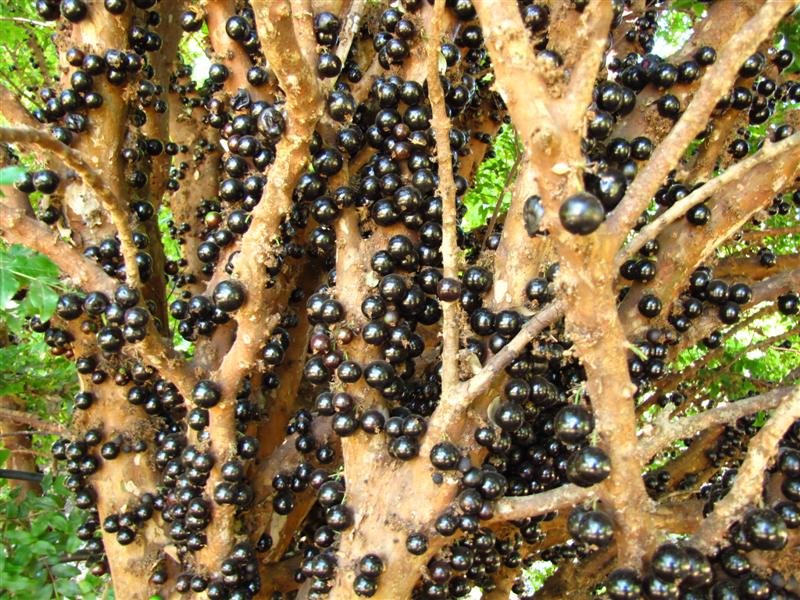 time of the year. The tangy dwarf blacks leave me messy and wanting more while the super sweet white or red shahtoots satisfy me with their tempting elongated fruits. We will be picking peaches and nectarines in the coming weeks and the flowers of the pomegranates are a delight, they brighten up the trees and are both interesting and gorgeous, heralding the impressive fruits that will follow. The jaboticaba is possible one of our most stunning plants and in full fruit it is extraordinary, we have been biting these open to suck out the grape-like insides for the last few weeks.
time of the year. The tangy dwarf blacks leave me messy and wanting more while the super sweet white or red shahtoots satisfy me with their tempting elongated fruits. We will be picking peaches and nectarines in the coming weeks and the flowers of the pomegranates are a delight, they brighten up the trees and are both interesting and gorgeous, heralding the impressive fruits that will follow. The jaboticaba is possible one of our most stunning plants and in full fruit it is extraordinary, we have been biting these open to suck out the grape-like insides for the last few weeks.
 Reviews: 1000's of Fruit Tree Reviews- My Edibles
Reviews: 1000's of Fruit Tree Reviews- My Edibles
500 Backyard Fruit & Veg Lovers have given feedback. How about searching below for reviews on fruit trees you are interested in:
** Share the Fruit & Veg you are growing **
Video: FREE Fruit from Trees in Public Places
FRUIT NOT FLOWERS
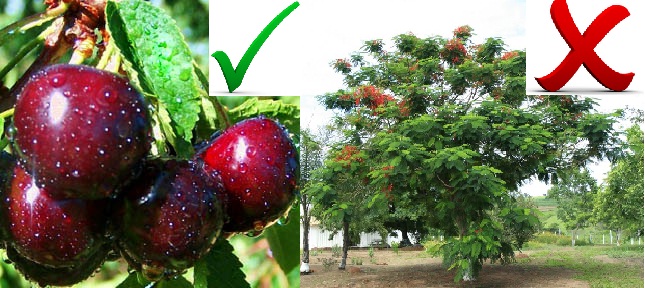
We believe that local councils should be planting fruit trees rather then flowers, shade trees etc. If you have any experience (Even a little bit) in this area please contribute to this forum:
Forum: Fruit Trees in Public Places
Video: Inspiring Video on FREE Public Fruit Trees.
Urban Tree Change in Sydney
The full episode can be watched on abc iview:
http://www.abc.net.au/iview/#/view/455675
Preparing for Summer
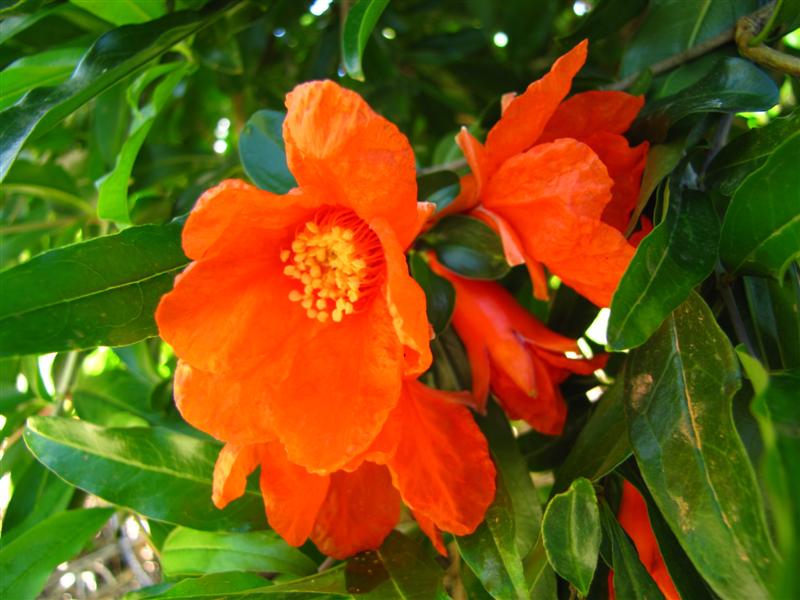 Summer can be a big test for young trees but there are several things we can all do to help protect our plantings during the hottest time of the year. Encourage your trees to form deep root systems; this is done by watering deeply. A common mistake that is made in the garden is to water frequently with short drinks, this encourages the root system to be shallow and it reduces the drought hardiness of your trees. Watering less often and more deeply is the key to making your plants drought hardy.
Summer can be a big test for young trees but there are several things we can all do to help protect our plantings during the hottest time of the year. Encourage your trees to form deep root systems; this is done by watering deeply. A common mistake that is made in the garden is to water frequently with short drinks, this encourages the root system to be shallow and it reduces the drought hardiness of your trees. Watering less often and more deeply is the key to making your plants drought hardy.
We are currently being tested up here on the North Coast with rising temperatures and a dry season that is being whipped by westerly winds. So what are we doing to protect our orchards? Carla has been very busy reinstalling irrigation lines that have not been used for the last few years, testing the lines for leaks and blockages and getting her system up and running perfectly, she can now sit back as the system runs on an automatic timer and wait for her fruits to ripen. This makes me, Kath green with envy, as my dam is holding nothing more the muddy footprints of my thirsty wallabies, even my ducks have left. I do not have the option to irrigate my 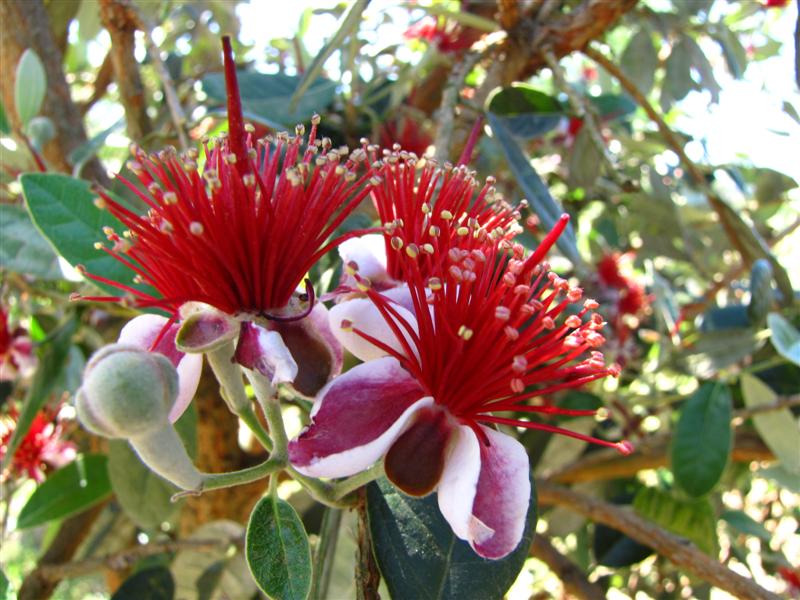 orchard. There are a few things that I can do though. When and if we get a little shower of rain I head out with my watering can a give the freshest most recently planted trees an additional drink to the meager rains. Everything growing on my place must be tough enough to survive, if it is not and does not make it through the dry season it will be replaced with one of the hardier and therefore more suitable trees for my site. I have also under the advice of Rick begun to use wetting agent, this helps the available moisture permeate the soil. It is a good time for me to cut back and prune my trees. This will decrease the volume of leaves on the tree, reducing the amount of moisture it requires as well as reducing the amount it transpires, the tree will push of with a strong flush of new growth when the rains come. If I take 1/3 off my mulberries now they have finished fruiting I will be reward with another crop in the autumn, just the thought of a few mulberries and I am ready to do the work required for the reward.
orchard. There are a few things that I can do though. When and if we get a little shower of rain I head out with my watering can a give the freshest most recently planted trees an additional drink to the meager rains. Everything growing on my place must be tough enough to survive, if it is not and does not make it through the dry season it will be replaced with one of the hardier and therefore more suitable trees for my site. I have also under the advice of Rick begun to use wetting agent, this helps the available moisture permeate the soil. It is a good time for me to cut back and prune my trees. This will decrease the volume of leaves on the tree, reducing the amount of moisture it requires as well as reducing the amount it transpires, the tree will push of with a strong flush of new growth when the rains come. If I take 1/3 off my mulberries now they have finished fruiting I will be reward with another crop in the autumn, just the thought of a few mulberries and I am ready to do the work required for the reward.
.jpg) Rick has been busy planting up the new hillside orchard of stock trees. The trees are watered in using wetting agent and then followed up with weekly drinks of about 20 litres depending on the size of the tree. Despite being the dry season spring is still a great time to plant if water is available to establish the planting.
Rick has been busy planting up the new hillside orchard of stock trees. The trees are watered in using wetting agent and then followed up with weekly drinks of about 20 litres depending on the size of the tree. Despite being the dry season spring is still a great time to plant if water is available to establish the planting.
Mulch, mulch, mulch. Another key to the survival of both the plants and the soil that sustains them. A generous layer of mulch suppresses weeds and helps to retain moisture levels in the soil, as well as breaking down to form nutrients for your plants. In fire prone areas the mulch is best not laid in a continuous swathe where it could create fuel for bushfire. Instead mulch individual trees and keep the ground in between mowed so that the fuel for any fire is reduced.
FACEBOOK & TWITTER
Can you Become a Fan of our Nursery on Facebook
Backyard Berries
Berries are best picked and eaten straight out of the garden as are all fruits. The 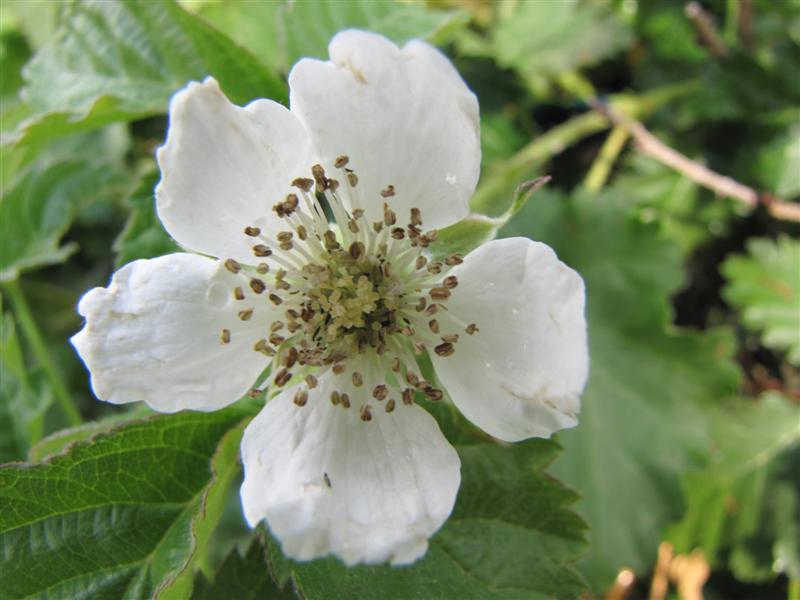 flavour of a home picked raspberry will never be surpassed by a shop bought fruit and there has never been a better time to start growing your own produce. Berries are great as there is something suitable for almost every backyard. Raspberries are a good place to start; they grow on perennial canes and can be productive for 15 years or more. There are a couple of things you need to know about your plants when selecting it for your site. Many raspberries fruit on their 2nd year's canes, these need to be kept for the next year's fruit production, so once this years canes have finished fruiting they can be cut back and the new years canes tied to a stake for fruit production in the following year. Primocane varieties like the Heritage raspberry fruit on their first year's wood. These plants are lower chill as they obtain the cold they need to set fruit while the cane is forming underground. This variety is suitable for subtropical areas.
flavour of a home picked raspberry will never be surpassed by a shop bought fruit and there has never been a better time to start growing your own produce. Berries are great as there is something suitable for almost every backyard. Raspberries are a good place to start; they grow on perennial canes and can be productive for 15 years or more. There are a couple of things you need to know about your plants when selecting it for your site. Many raspberries fruit on their 2nd year's canes, these need to be kept for the next year's fruit production, so once this years canes have finished fruiting they can be cut back and the new years canes tied to a stake for fruit production in the following year. Primocane varieties like the Heritage raspberry fruit on their first year's wood. These plants are lower chill as they obtain the cold they need to set fruit while the cane is forming underground. This variety is suitable for subtropical areas.
Many of the other berries are what they can scramblers, including the youngberry,  boysenberry, loganberry and keriberry and their name describes them well. They will crawl and scramble their way around your whole backyard if your let them. A fence or trellis structure will help to keep them in check and give them a support to climb up as well as making picking an easy task. The berries all grow well in pots or bonsai bags, we have all our scrambling berries in 35 litre bonsai bags where we can keep them in check and they are less likely to take over the orchard. It is also important to remember that the true nature of these plants is to be prickly scramblers. Even the thornless varieties will push out thorny shoots if they have ideal growing conditions, cut out the thorny parts of these plants to retain the thornless sport.
boysenberry, loganberry and keriberry and their name describes them well. They will crawl and scramble their way around your whole backyard if your let them. A fence or trellis structure will help to keep them in check and give them a support to climb up as well as making picking an easy task. The berries all grow well in pots or bonsai bags, we have all our scrambling berries in 35 litre bonsai bags where we can keep them in check and they are less likely to take over the orchard. It is also important to remember that the true nature of these plants is to be prickly scramblers. Even the thornless varieties will push out thorny shoots if they have ideal growing conditions, cut out the thorny parts of these plants to retain the thornless sport.






